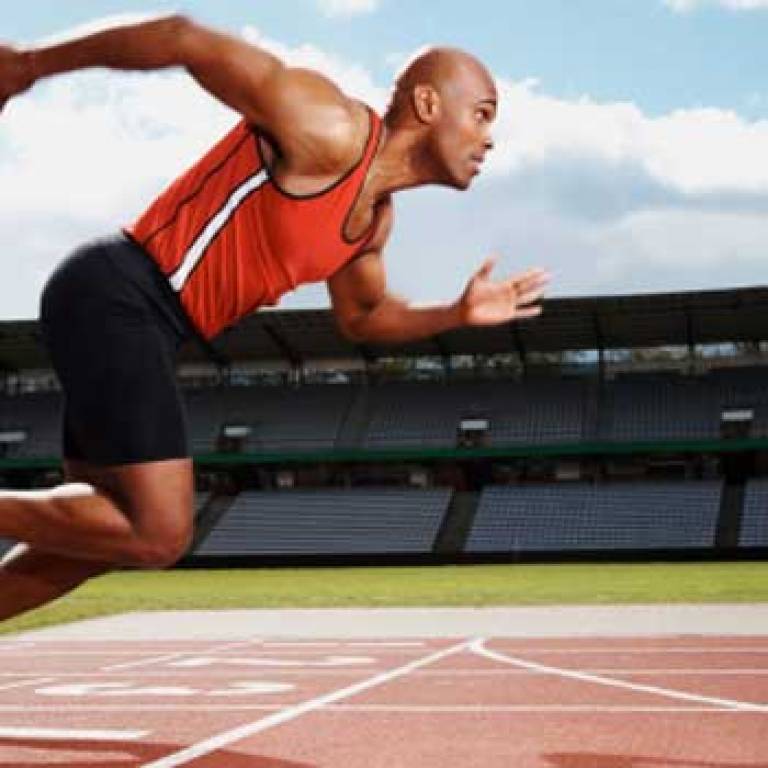Q&A: UCL Institute of Sport, Exercise and Health
1 July 2010
Link:
 ucl.ac.uk/surgicalscience/departments_research/iseh" target="_self">UCL Institute of Sport, Exercise and Health
ucl.ac.uk/surgicalscience/departments_research/iseh" target="_self">UCL Institute of Sport, Exercise and Health
UCL has launched an Institute of Sport, Exercise and Health to create a hub of expertise for sports and exercise-related research.
In this Q&A, director Fares Haddad explains the purpose of the new Institute and gives an insight into its research and its goals.
Q: How will the new Institute advance the sports and exercise-related research taking place elsewhere at UCL and beyond?
A: The Institute will hope to bring together the various bodies doing sports and exercise-related research at UCL, which include the John Scales Centre for Biomedical Engineering, ASPIRE, a charity which supports people with spinal injury, the Institute of Human Performance, the Hatter Institute and many others.
We want to integrate all their sports- and exercise-related research to facilitate the use of limited funds. Our key partners in terms of sports-related work and research outside of UCL will be the universities of Warwick, Nottingham, Loughborough, Sheffield and Bristol and Bath.
Q: UCL has a lot of expertise in biomedicine - how will the Institute tap into and extend this?
A: There will be a great deal of clinical work focusing on high-end outcomes in athletes and in sport as a whole. Many of our interventions, particularly drug-related and surgical interventions for injuries, have tended to accept a less than perfect outcome. We are now looking at systems for trying to return injuries back to normal function and having ways of recording and documenting that process.
Q: Can you give an example of the sort of research taking place at the Institute?
A: Professor Hugh Montgomery and his team have been leading research on the genetics of bone physiology, and in particular of stress fractures in athletes. We have published on this and it is now being extended to the elite athletic population. We are looking at genetic polymorphisms to see if we can identify groups at risk of certain injuries and groups more suited to one sort of exercise/ sport or another.
Another area of research is the clinical and imaging assessment of the young adult hip in sport. This is a key source of morbidity which was previously unrecognised. Young sportsmen and women start to damage their hips at a very young age and that groin pain which was previously ascribed to soft tissue problems is in fact a bony problem in the hip joint that later leads to osteoarthritis and a hip replacement. We now have good ways of imaging that and minimally invasive interventions that can deal with the problem and hopefully change the natural history for these people, not just getting them back to sport but also allowing them a longer lifespan without major hip surgery.
Q: Is any of the research focused on London 2012?
A: A great deal of the research is focused on optimising our athletes for London 2012. The Institute includes the British Olympic Medical Institute Science and Research Unit, which is based in the Rosenheim building. The Unit focuses on scientific activities aimed at improving the understanding of the effects of various training paradigms on human performance as well as developing innovative technical solutions, training methodologies and nutritional interventions in partnership with academic institutions, the home countries' home institutes and UK sport and Olympic sponsors.
Q: Will the general public feel the impact of the Institute's work, or is it restricted to elite athletes?
A: The work of the Institute will focus partly on translating the current knowledge in sports and exercise medicine to the general public for public health benefit, but also on trying to deliver that extra 1% that makes a difference between gold medals and also-rans in elite sport/athletics. The whole idea is that exercise medicine is made available in the community to decrease risks of cardiovascular problems, diabetes and other problems.
Q: Does the Institute have any external partners?
A: The Institute has a number of external partners including the English Institute of Sport, the British Olympic Association, and it is also involved in looking after UK Athletics and professional rugby and football clubs, such as Saracens and Tottenham Hotspur.
Image: An athlete training on a running track.
Related stories:
World first for veterinary science designed at UCL
UCL helps engineer design and evaluate device to heal his own heart
 Close
Close

